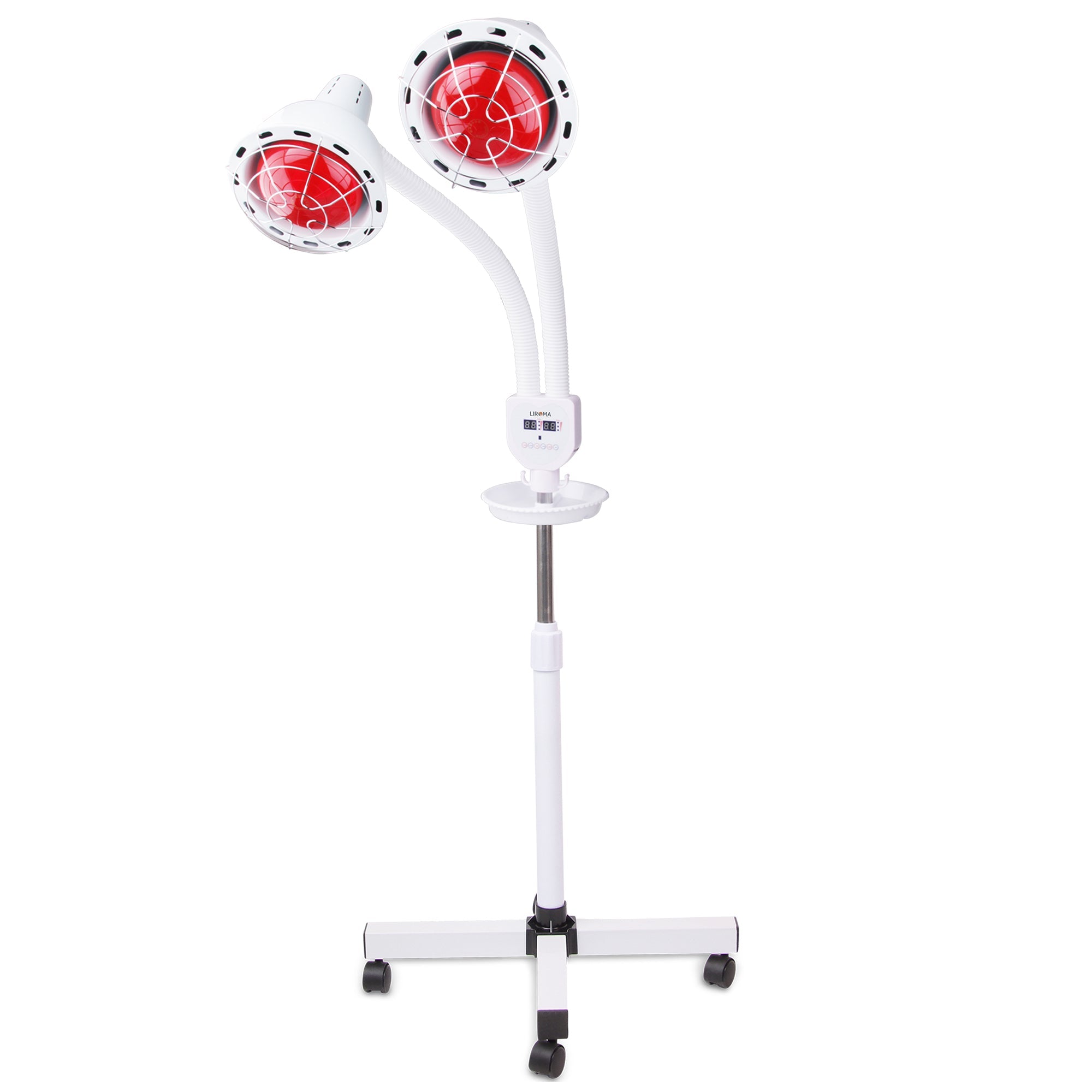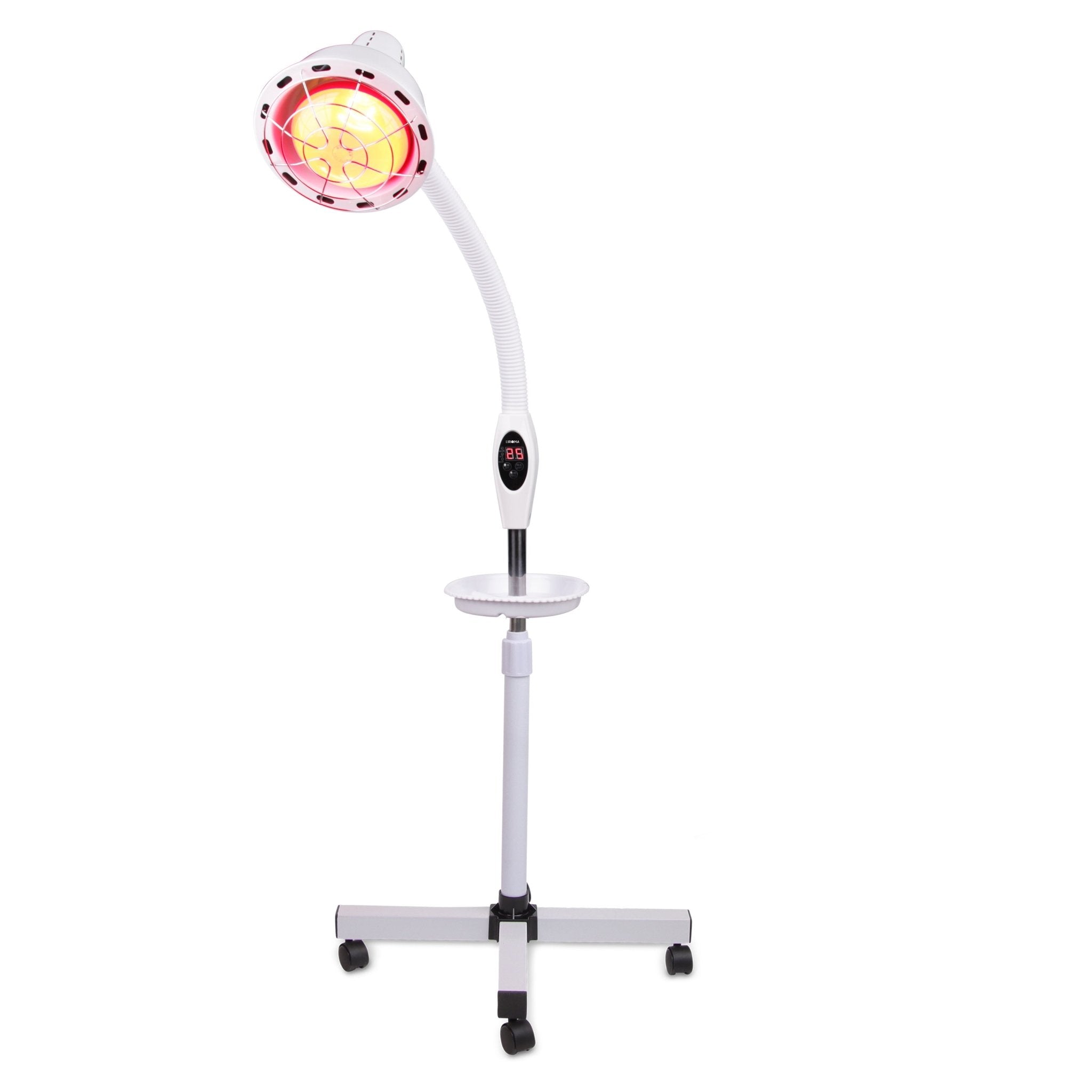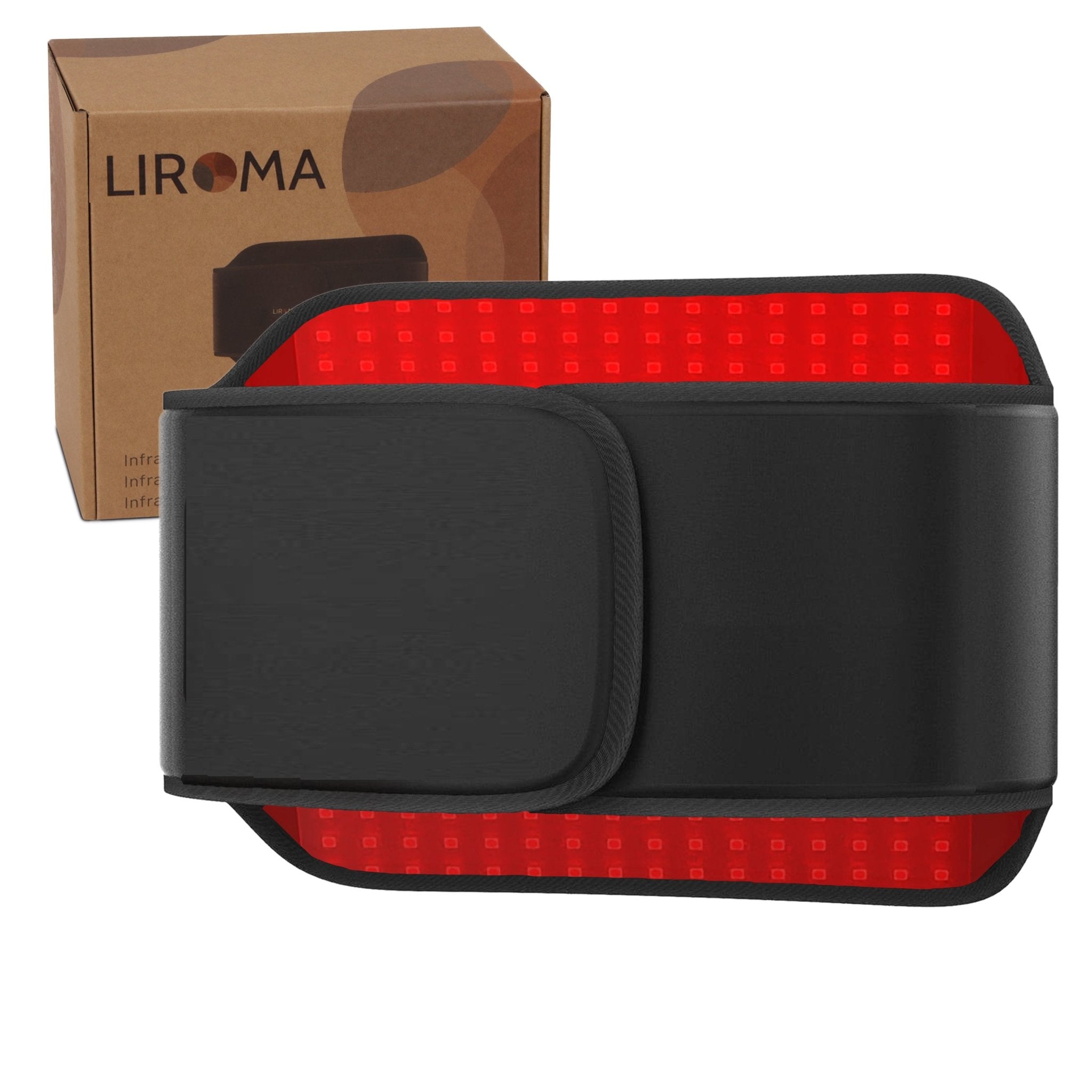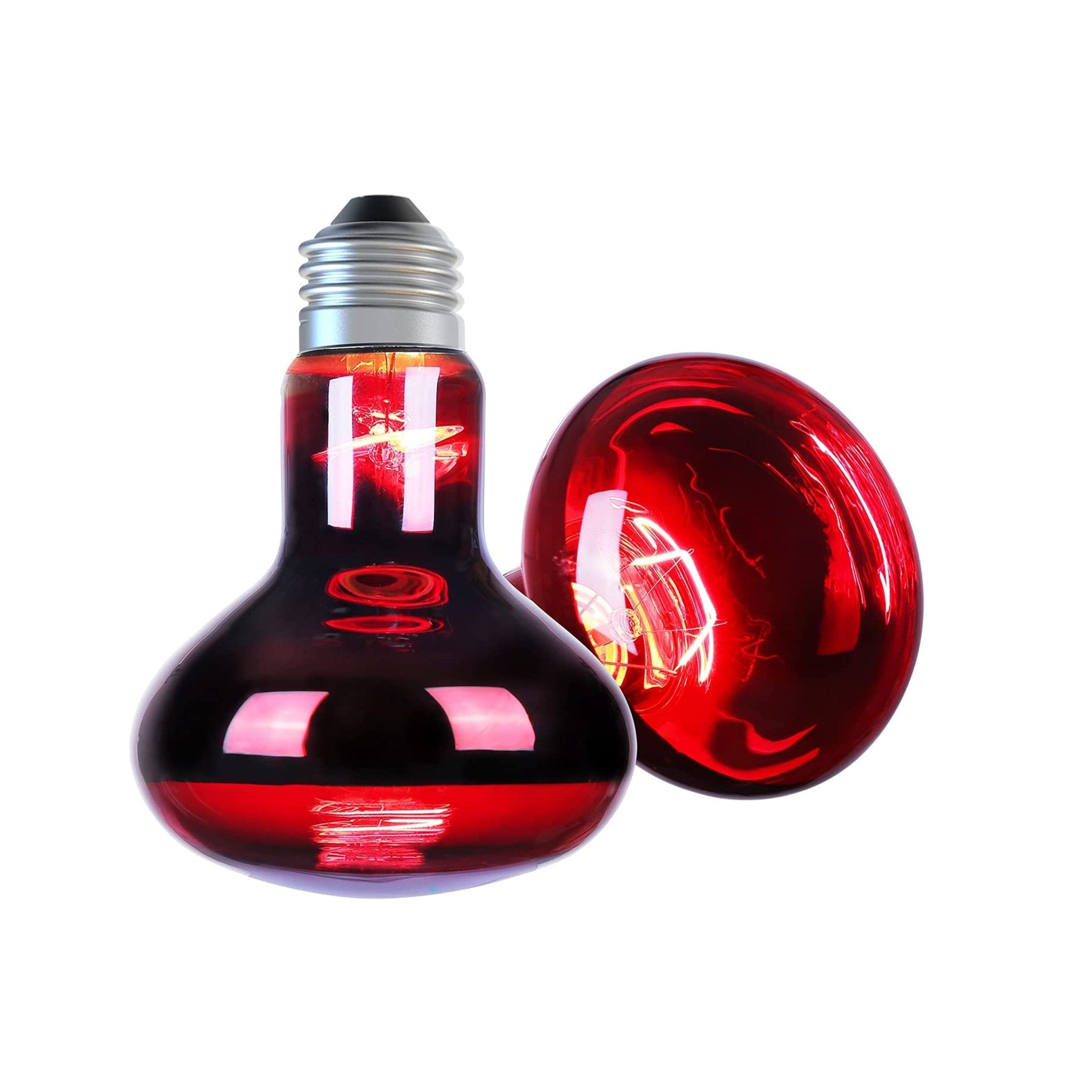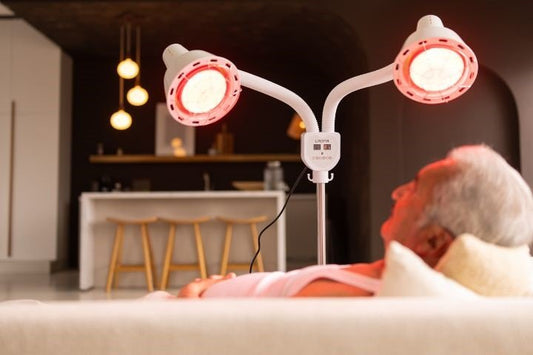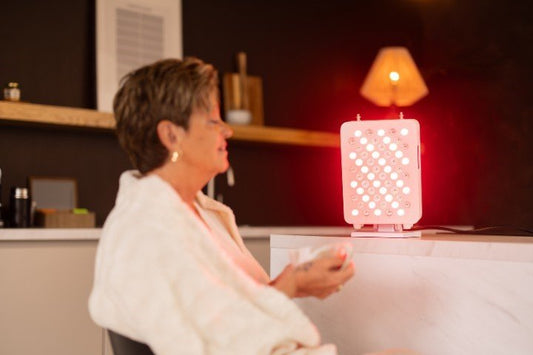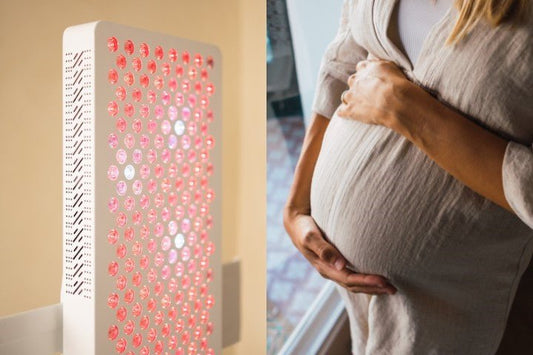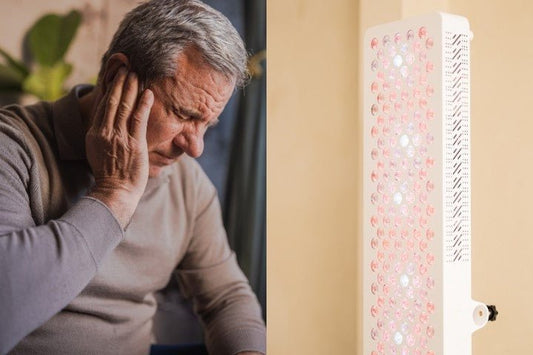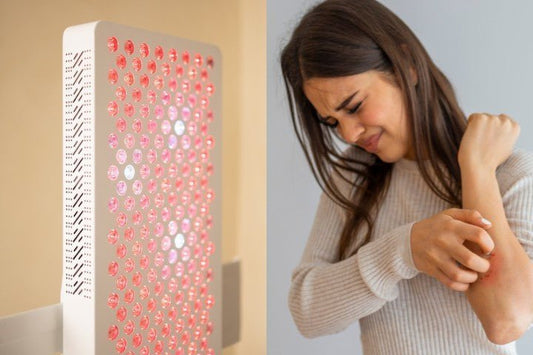Infrared therapy might sound a little high-tech, but it’s actually a surprisingly simple and natural way to support your body. The warmth penetrates deeply into muscles and joints, stimulates circulation, and promotes relaxation from within.
Whether you struggle with stiff muscles, joint pain, skin issues, or simply want some extra relaxation: infrared lamps can make a big difference. In this blog, we’ll walk you through the most common applications of infrared light: clear, concise, and easy to read.
Note: this text is not medical advice. It is based on our own knowledge, customer experiences and various online sources.
Infrared lamp uses
- For flexible muscles
- For joint problems
- For back and neck pain
- For the face
- General relaxation & wellbeing

1. For flexible muscles
The warmth of infrared light penetrates deeply into skin and muscles, effectively helping to relieve pain and tension in joints and tissues. This makes infrared therapy ideal for people with fibromyalgia or rheumatism, as it relaxes muscles and reduces stiffness.
Unlike a hot water bottle or heating pad, infrared light heats the body directly, without warming the surrounding air first. That makes the effect more targeted and noticeable.
Another advantage: infrared helps remove lactic acid and waste products, allowing muscles to recover more quickly after exercise while nutrients reach the cells more efficiently.
2. For joint problems
For conditions like osteoarthritis or arthritis, infrared heat can provide relief. Its deep-reaching warmth improves circulation in the joints, which reduces stiffness and makes movement easier. The gentle, direct heat also makes this therapy suitable for daily use without straining the joints.
Many users find that regular use not only reduces pain but also improves mobility. This makes infrared a valuable addition alongside other treatments.

3. For back and neck pain
Infrared therapy is widely used for chronic back and neck complaints. An infrared lamp or special back strap provides targeted warmth, relaxing muscles and improving circulation. This not only reduces pain but also tackles the stiffness often associated with long-term complaints.
One big advantage: infrared penetrates into the deeper muscle layers, which are often tense due to stress or poor posture. Regular use can therefore improve mobility and bring more comfort in daily life.
4. For the face
Infrared therapy is increasingly finding its way into skincare routines. Regular use can improve circulation and stimulate cell renewal, leaving skin firmer, smoother and more even. Fine lines and wrinkles soften, and the complexion looks healthier.
Infrared can also support the treatment of acne and scars, as it speeds up the healing process and calms inflammation. For many users, it’s a natural way to improve the skin without aggressive treatments.

5. General relaxation & wellbeing
Beyond the physical benefits, many people use infrared light simply to relax. The deep warmth has a calming effect on the body and can help with stress reduction.
Some users even notice that after an infrared session they fall asleep more easily and wake up more refreshed. A natural way to restore daily balance.
Summary & advice
From flexible muscles to skin improvement, and from joint pain relief to relaxation: infrared therapy is versatile and easy to use at home. With an infrared lamp, you bring a touch of wellness and recovery right into your living room.
How to use an infrared lamp:
- Keep the lamp 20–30 cm away from the treatment area
- Use the light for 10–20 minutes per session
- Repeat 3–5 times per week
- Results are often noticeable after a few weeks of regular use
At Liroma, we believe infrared therapy is a valuable addition to a healthy lifestyle. Curious which lamp is best for your needs? Feel free to contact us for personal advice.


